Today, the National Aeronautics and Space Administration marks its first half-century of exploration and discovery. But missions to the Moon and beyond are only part of the story. Without Nasa's scientists, life on Earth would be very different indeed. Rob Sharp chronicles a technological revolution
Tuesday, 29 July 2008
1.The hand-held vacuum cleaner
The cordless miniature vacuum cleaner was born after Black & Decker developed a self-contained portable drill for the Apollo Moon landings between 1963 and 1972. The machine used a specially developed computer program, meaning it used less power to extract core samples from beneath the Moon's surface. That computer programme helped the company develop more battery-powered gadgets, among them, the cordless mini vacuum cleaner.
2.Air-cushioned trainers
In the early 1980s, a process known as "blow rubber moulding" was used to produce space helmets. Using this technology, former Nasa engineer Frank Rudy pitched an idea for an in-trainer shock absorber to the Nike Corporation. He envisaged a trainer with hollow soles filled with shock-absorbing material to cushion the impact of running. Rudy's idea included a pad of interconnected air cells and the resulting trainer was called the Nike Air.
3.Firefighter breathing apparatus
Before 1971, the average weight of breathing apparatus was more than 30 pounds. Carrying the extra weight was so physically gruelling that some firefighters opted to attack flames without any equipment. However, engineers at Nasa adapted the life-support systems used in spacesuits for use by emergency services. Four years later, experts had designed apparatus that weighed a third less and offered better fit and visibility.
4.Blankets for marathon runners
In 1964, Nasa developed a material capable of reflecting heat very effectively – a thin sheet of plastic coated with a metallic reflecting agent, usually gold or silver in colour. Used as a blanket, it reflects about 80 per cent of the wearer's body-heat back to them. It's used to keep accident victims warm, and by marathon runners after the finish.
5.Safer runways
Nasa researchers discovered that cutting thin grooves across concrete runways reduces the risk of an aircraft aquaplaning after landing. Excess water drains along the grooves, increasing tyre friction in wet conditions. The expertise has been adopted by airport operating authorities around the world.
6.Pill transmitters
Pill transmitters swallowed by astronauts to check their temperature and blood pressure are undergoing trials to be used as a way to monitor the health of foetuses in the womb. These pill-shaped gadgets can be used to monitor body temperature, pressure and other vital signs.
7.Faster racing cars
Carbon fibre was invented by the British in the 1960s (at the Royal Aircraft Establishment, Farnborough), but was given a boost by its use in space flight. Carbon-fibre-reinforced graphite is used in the nose cone of the Space Shuttle. Strong, light and heat resistant, it is found in everything from tennis rackets to Formula One racing cars
8.The roof of the Millennium Dome
A flexible yet durable Teflon-coated fibreglass material was developed in the 1970s for use on astronauts' spacesuits. Teflon-coated fibreglass is now used for the roofs of many buildings worldwide, including the Dome in London.
9.Greenliving
It may seem strange, but the green movement owes a debt of gratitude to the rockets that blasted off into space. Efficient solar-power technologies – in which silicon crystals grown in a laboratory convert light into electrical energy – were first developed by Nasa in the early 1980s. The same technology is now widely used by companies manufacturing solar panels.
10.Personal storm warning system
The personal lightning detector is popular with boaters, golfers and those flying private planes, but this low-cost spin off was developed using Space Shuttle expertise. After being pointed at a cloud, the device detects the formation of lightning by analysing subtle changes in light level. The invention is now popular around the world.
11.The most impressive soundbite of all time
Neil Armstrong setting foot on the moon on 21 July 1969 was one of the most historically important moments of the 20th century. His proclamation, which was heard by radio audiences around the world – "that's one small step for [a] man, one giant leap for mankind" – remains one of the most famous statements ever uttered.
12.Better sunglasses
Nasa invented a special coatingusing a form of diamond-like carbonto protect its astronauts’ helmetsfrom being scratched by space particles. A modified form of this substance – which decreases surface friction and therefore reduces scratching – has since been used by many sunglasses manufacturers, including Ray-Ban, since 1988.
13.First detailed map of another planet
In 1971, the Mariner 9 probe arrived at Mars and beamed a total of 7,329 images of the planet back to Earth. It provided the first global map of the surface of the Red Planet, including detailed views of its system of canyons and volcanoes, Valles Marineris.
14.The potential to preserve priceless art
After being first tested by Nasa, "polyamides" – incredibly strong and heat-resistant polymers – have been researched by the J Paul Getty Trust, which has discovered that one in particular may protect bronze statues from corrosion.
15.Car crash technology
"Explosive" bolts that can be remotely detonated to destroy them were used to free the Space Shuttle from its rocket boosters on blast-off. The technology has been adapted to create quicker and more powerful equipment to cut people out of car crashes. The cutters employ the same pyrotechnic "power cartridges" used on the Shuttle.
16.Longer golf shots
Wilson – one of the world's biggest golf ball manufacturers – has improved the performance of its golf balls by implementing technology used to test the aerodynamics of the Space Shuttle's external fuel tanks. These balls have a variety of specially configured dimples, which the company claims makes them travel further than conventional balls.
17.Plane wing-tips
Ever seen the vertical tip at the end of an aeroplane wing and wondered what it is? It's a called a winglet and was originally developed at Nasa's Langley Research Centre. The winglet produces a degree of forward thrust (to help the plane in take-off and flight), operating much like a boat sail, and reduces wingtip drag. The winglet has been in service since the 1970s, and is found on all types of aircraft.
18.Freeze-dried meals
Nasa developed freeze-drying technology for the food carried by the Apollo missions. After the process, the product retains 98 per cent of its nutritional value and weighs just 20 per cent of its original weight. Snacks based on this technology are exported by Nasa to many countries, with sales running to several million pounds a year.
19.Baby food
Through Nasa research on algae (which it was hoped could generate oxygen in space through photosynthesis), it was found that certain algae contain two essential fatty acids present in human breast milk. These acids play an key role in infants' mental and visual development. A synthetic ingredient that contains these acids is now added to baby food in 66 countries.
20.Warmer feet
Battery-powered thermal boots used by skiers are adapted from designs developed to keep astronauts warm during the Apollo space programme. Rechargeable batteries are worn inside the wrist of a glove, or the sole of a ski boot, and heat is generated by a small electrical circuit.
21.Increased understanding of the beginning of life
In 1995 the Hubble Space Telescope beamed images of the "Pillars of Creation" – columnar clouds of gas found in the distant Eagle Nebula – back to Earth. As well as being some of the most impressive images of space, these pictures changed scientists' understanding of the beginnings of life in the universe.
22.'Anti-gravity' treadmill
British marathon runner Paula Radcliffe has a stress fracture to her left leg, but aims to compete in the Beijing Olympics. She hopes to achieve this by training on a special "anti-gravity" treadmill developed by Nasa to help astronauts exercise in space. The machine operates in a high-pressure chamber which, in effect, cuts the weight of the user.
23.Hang gliders
In 1957, Nasa began testing various forms of wing for its Gemini space capsules. The wings' simplicity of design, ease of construction, along with their capability of slow flight and gentle landing characteristics, was picked up by hang-gliding enthusiasts. The hang glider the enthusiasts designed became the most successful in history and formed the basis for the more streamlined hang gliders used today.
24.Straighter teeth
Nitinol, an alloy used by orthodontists to wire teeth braces, was tested in satellites that needed to spring open after being folded into a rocket. Nitinol is durable and springs back into shape after bending.
25.Heat-absorbing sportswear
Athletes can perform more strenuous activity without becoming overheated, thanks to new sportswear inspired by the cooling systems used in astronauts' spacesuits. The clothes have packets of heat-absorbing gel positioned near parts of the body where the most heat is emitted.
26.Heart surgery
Bypass surgery is not the only means for doctors to deal with a blockage in the coronary artery. Nowadays, precise lasers can be used to clean arteries with extraordinary accuracy, while not damaging the walls of blood vessels. The lasers were originally developed by Nasa to monitor gases in the atmosphere of the Earth.
27.Life support for patients
Project Mercury, the first US human spaceflight programme, which ran from 1959 to 1963, developed sophisticated monitoring systems to track the physiological status of its astronauts. The same technology is used today in intensive care units and specialist heart units.
28.Medicinal light- emitting diodes
The light-emitting diode (LED) technology used in plant growth experiments on board the Space Shuttle has led to the development of hand-held LED units used for the temporary relief of muscle and joint pain, as well easing the symptoms of arthritis, stiffness, and muscle spasms. It is that hoped use of LED technology will spread to aid bone-marrow transplant patients in the near future.
29.Artificial limbs
Robotic technology has been used to create more dynamic artificial limbs. New foam technology – used as a shock absorber by Nasa – has brought about more natural-looking prostheses and has helped reduce wear and tear.
30.Intelligent underwear
A new bra developed as a space spinoff aids the detection of breast cancer by employing water flowing through tubes to cool the skin surface. When used in conjunction with thermography – a heat-detecting technique used to detect tumours – this adapted clothing, improves image resolution and makes it easier to pick up any cancers.
31.Detection of forest fires
Nasa fire-detection wizardry developed in the early 1990s is now used by the authorities in the USA to detect forest fires that might not be spotted soon enough on the ground, and pinpoint their location. Infrared technology identifies the extent of a fire so firefighters can be sent to the right places to tackle it.
32.Plant research
Nasa research into possible bases on the Moon and Mars is looking into the use of plants to provide food, oxygen and water, reducing the need for outside supplies. The research is based on hydroponics, in which plants grow in a liquid instead of in soil. It could be used in food production on Earth.
33.Chromosome analysis
Using Nasa image-processing technology, human chromosomes are being photographed via cameras mounted on microscopes. The images can then be digitised, allowing doctors to enhance the pictures. The technique can be used to detect infant abnormalities.
34.Less rubbish
Derived from technology on the Space Shuttle, a waste compactor that needs no electrical power has been developed for boats and recreational vehicles. The device has hand-operated ratchets that drive a pressure plate with a compressive force of 2,000 pounds – a more than ample amount to crush cans, for instance.
35.Better skiing
Nasa developed the know-how to keep spacecraft windows clear of condensation before launch by applying two thin coatings of a special detergent oil mix to them. This has since been applied to stop ski goggles, deep sea diving masks, spectacles and vehicle windows from steaming up.
36.Better brakes
Studies of high-temperature space materials allowed the development of more resilient and cheaper materials for brake linings. These substances are now found in truck brakes, cranes and passenger cars and make for better and more reliable braking at high speed.
37.Improved air quality
A US firm has created an air-quality monitoring system based on a Nasa scheme. The monitor can analyse the gases emerging from chimneys and determine the amount of individual gases present, helping to ensure that buildings meet emission standards.
38.Life-saving heart technology
One benefit of Nasa's work in telemetry – wireless control of devices – has been the creation of a heart pacemaker that can be controlled remotely. With no invasive procedures, a physician communicates with the pacemaker via a wireless device held over the patient's chest.
39.A possible end to water shortages
Research into using bacteria as a means to remove impurities and purify water is being still being undertaken by Nasa. The system makes use of scant resources by turning waste water from respiration, sweat and urine into drinkable liquid and it's hoped that this could help poorer communities in developing countries.
40.More competitive swimming
Some of the swimsuits favoured by professional swimmers utilise technology found in spacesuits. The rubber is covered with barely visible grooves that reduce friction and aerodynamic drag by modifying the flow of water over an athlete's body. These suits are 10 to 15 per cent faster than conventional swimsuits and could give an athlete the winning edge.
41.The self-righting life raft
Developed for the Apollo programme, the raft fully inflates in 12 seconds and is stable during extremely adverse weather conditions. The craft are now used by coastguards around the world.
42.Home blood pressure kits
When Alan Shepard became the first American to fly in space some 37 years ago, Nasa scientists had to invent an automatic measuring device to find out how blasting off affected the astronaut's blood pressure. Blood-pressure kits based on this design subsequently went mainstream.
43.Hydraulic rescue cutters
A rescue tool used by fire departments across America uses battery technology first employed by Nasa. The cutting technology – used to free accident victims from wreckage – employs a miniature version of the power cartridges first used on the Space Shuttle and is 50 per cent lighter (and 70 per cent cheaper) than previous rescue equipment. The cutters work more quickly than conventional ones and were used in the aftermath of the 1995 Oklahoma Federal Building bombing.
44.Satellite television
On 10 July 1962, a television transmission showed the American flag fluttering outside a communications centre in Andover, Maine. It was made possible after Nasa launched its Telstar satellite, the world's first active communications satellite, at 4.35 that morning.
45.Voice-controlled wheelchairs
Voice-controlled wheelchairs make use of Nasa robot voice recognition technology and are fitted with microcomputers that can respond to oral commands. The chairs help people with severe disabilities to perform daily tasks such as turning on appliances.
46.Mine-clearing technology
A type of surplus rocket fuel favoured by Nasa has been used to create a device that can destroy land mines safely. The gadget uses the fuel to burn a hole in the mine's casing and to burn away the explosive contents, making it easier to clear land of mines.
47.Long-life tyres
The technology used to make parachutes to land exploratory probes was adapted by tyre companies to create tyres five times stronger than steel. Such technology, pioneered for use in tyres by Goodyear in the late 1970s, employs long-chain molecular structures to increase tread lives by 10,000 miles, meaning that we can all drive further for less.
48.Eye screening
Nasa image-processing techniques are used to detect eye problems (errors in refraction, or the bending of light on to the retina) in children. An electronic flash from a 35mm camera sends light into the child's eyes, and an image of the patient's optical reflexes is then produced.
49.The personal alarm system
The pen-sized ultrasonic transmitters used by prison guards, teachers and the elderly and disabled to signal for help is based on technology derived from space telemetry. The pen transmits a silent signal to a receiver that will display the exact location of the emergency, enabling help to be sent.
50.The first photos of Saturn's rings
In 1977, the probe Voyager 1 took almost 16,000 images of Saturn, its moons and its rings. The resulting photographs detected the presence of "spokes" within the planet's ring patterns, which led scientists to reconsider theories about their formation.
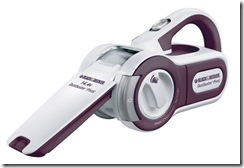
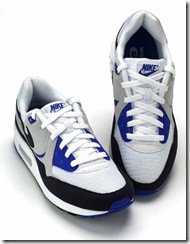
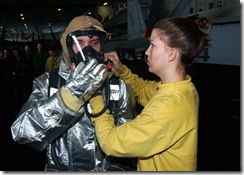
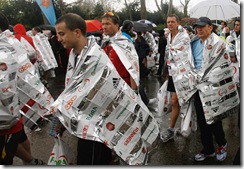
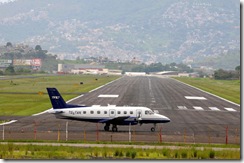

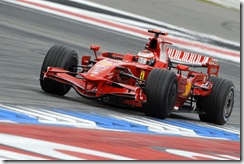
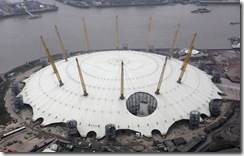
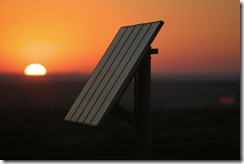
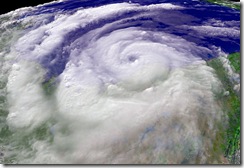
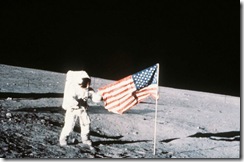
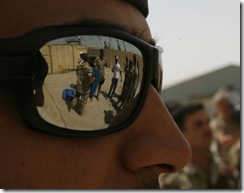
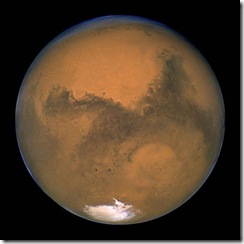
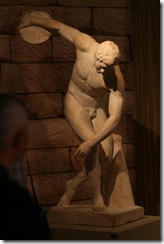

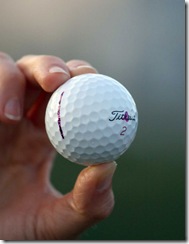

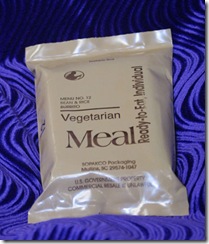
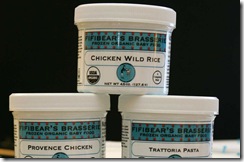
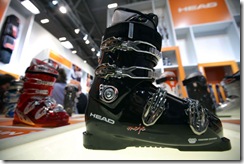
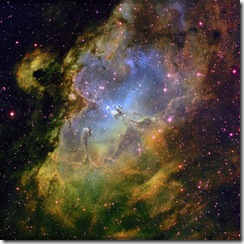

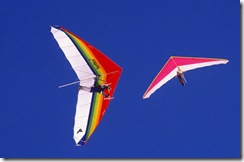
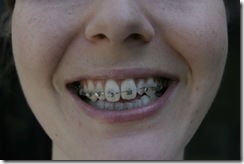
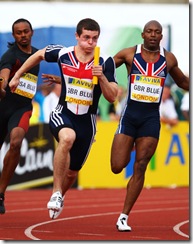

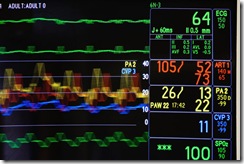
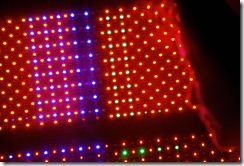
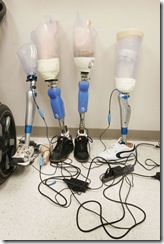
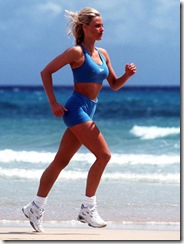
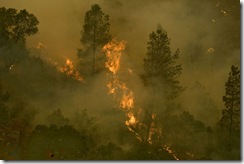


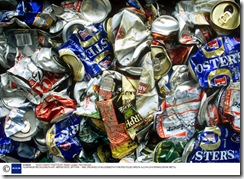
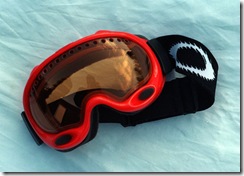
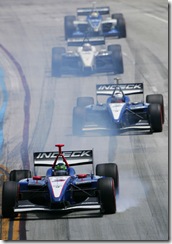

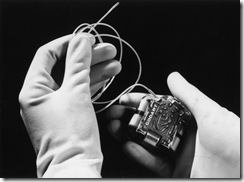
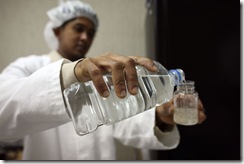
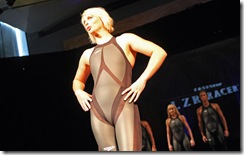
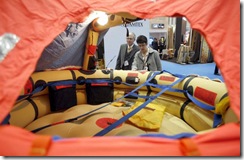
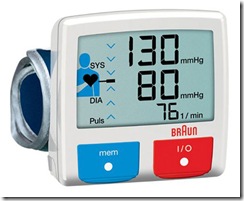
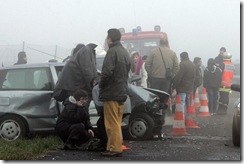
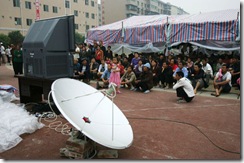
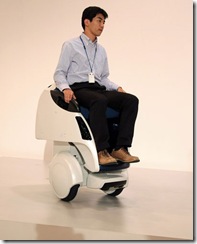
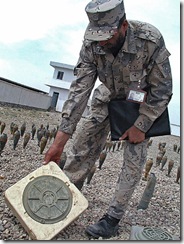
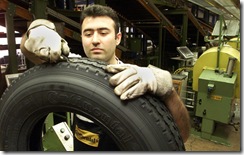
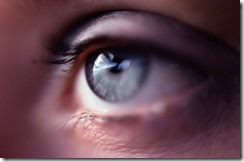
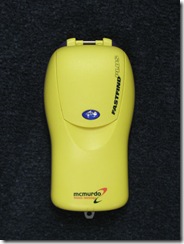
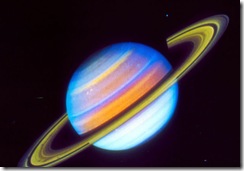
No comments:
Post a Comment